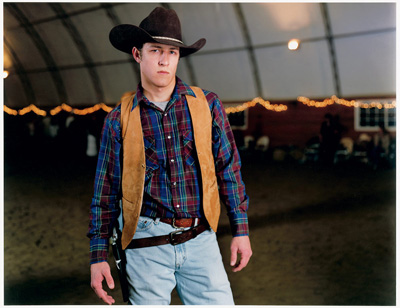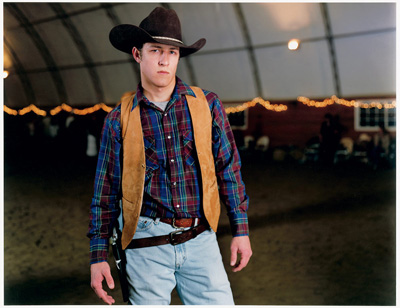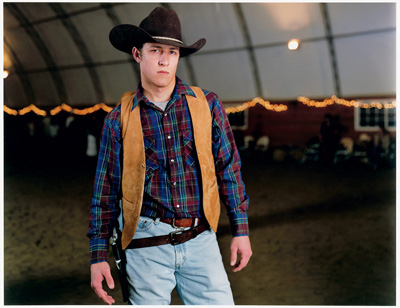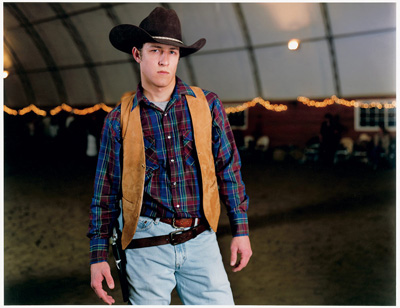
(RNS4-DEC31) Nathan is a student at Patrick Henry College in Purcellville, Va., who is featured in Jona Frank’s new book, “Right: Portraits from the Evangelical Ivy League.” For use with RNS-10-MINUTES, transmitted Dec. 31, 2008. Religion News Service photo courtesy Jona Frank.

(RNS4-DEC31) Nathan is a student at Patrick Henry College in Purcellville, Va., who is featured in Jona Frank’s new book, “Right: Portraits from the Evangelical Ivy League.” For use with RNS-10-MINUTES, transmitted Dec. 31, 2008. Religion News Service photo courtesy Jona Frank.

(RNS4-DEC31) Nathan is a student at Patrick Henry College in Purcellville, Va., who is featured in Jona Frank’s new book, “Right: Portraits from the Evangelical Ivy League.” For use with RNS-10-MINUTES, transmitted Dec. 31, 2008. Religion News Service photo courtesy Jona Frank.

(RNS4-DEC31) Nathan is a student at Patrick Henry College in Purcellville, Va., who is featured in Jona Frank’s new book, “Right: Portraits from the Evangelical Ivy League.” For use with RNS-10-MINUTES, transmitted Dec. 31, 2008. Religion News Service photo courtesy Jona Frank.
(UNDATED) Patrick Henry College was founded in Virginia outside Washington in 2000 with a mission “to prepare Christian men and women who will lead our nation and shape our culture with timeless biblical values and fidelity to the spirit of the American founding.”
Nearly all Patrick Henry students were home-schooled by conservative evangelical parents, and the school was founded as a training ground to prepare new generations of lawyers, politicians and culture warriors to reclaim America for God.
Los Angeles photographer Jona Frank, 42, spent four semesters documenting life at Patrick Henry. The result is her new coffee table book, “Right: Portraits from the Evangelical Ivy League.” Some answers have been edited for length and clarity.
Q: For people who have never heard of Patrick Henry College, what do they need to know?
A: The easiest way to describe it is: it’s the college for home-schoolers. It’s kind of a transition between their homes and going out into the world. A lot of people think of it as God’s Harvard or the evangelical ivy league.
Q: Photos of students at a Christian college might seem like an unusual choice. What drew you to the project?
A: I had already done a book about the social hierarchy of high schools, and how you define or represent your group through what you wear. At Patrick Henry, students are encouraged to glorify their appearance for God. Hanna Rosin wrote a piece in The New Yorker in 2005 that described the women at Patrick Henry as `Washington wives-in-waiting,’ so I knew I had found my next project.
Q: What were your thoughts about home-schooled kids going into the project?
A: I didn’t really have any. I was curious about what it meant to be home-schooled. I definitely approached it open-minded, with a sense of ambiguity and discovery. I’m also really interested in this idea of coming of age; that’s a period I like to explore through my work.
Q: And what did you make of them when you were done?
A: They seemed both young and old at the same time. Some of them seemed much younger than the high school students I met in the first book, but they lacked this kind of youthfulness in a lot of other adolescents I had worked with. They have such a serious demeanor and are driven to change the culture. I was impressed with how smart and committed they were, but at the same time, that sense of being so self-assured made me nervous for them.
Q: The kids in the book strike me as extremely serious. Few smiles, stern expressions. Was that their choice or yours?
A: It was a combination, but it was more my choice than theirs. They were so purposeful, so serious, so driven,; it’s very much the atmosphere of the school. That’s what I wanted to capture-that sense of purpose.
Q: There’s a picture of one student, Juli, and she’s got this really nervous half-smile on her face. She looks like she wants to smile, but isn’t sure if she should. Tell me about that.
A: She’s on that cusp of trying to figure out who she is, and also trying to be who everyone else wants her to be. And in that moment, she was trying to figure out who I wanted her to be. I felt like that picture really captured that kind of tension.
Q: You also took photos of the students’ parents and siblings. Why?
A: The book is set up as three parts: an introduction to Patrick Henry; then we go back to the homes to see where these kids came from; and finally the moment when the kids leave Patrick Henry and meet the outside world.
Q: I’ve got to ask you about the outfits for the Liberty Ball. There’s one kid in coat tails and khakis, one who’s dressed like a Union soldier and, again, Juli, in a shimmering floor-length number that looks like the Statue of Liberty. Thoughts?
A: Juli’s dress was homemade. There’s a sense at the school, and I think in those pictures, of a simulated past, this notion that life was better before; that people had better values. I think those pictures really capture that.
Q: You went inside their dorm rooms. What were they like?
A: Most of the rooms I saw were girl’s rooms, and they were all really organized. I didn’t’ see a lot of pizza boxes.
Q: A lot of people just don’t understand home-schooling. What’s your sense of it now? Good thing? Bad thing?
A: I see reasons for it when you live in a place that’s very remote and you don’t have a lot of educational opportunities. But ultimately, I think it limits your perspective. It’s not something I thought was really good for a lot of the kids. They grow up in a way that’s very atypical for a lot of everyday people. Being in an environment where your religious ideals are challenged, where your life perspective is challenged, is healthy.
END/DSB ECKSTROM




